Northern Harrier (Circus cyaneus) Female photos by Larry Jordan
The Northern Harrier (Circus cyaneus) was also known as the Marsh Hawk in the United States and is known as the Hen Hawk in Eurasia (click on photos for full sized images).
It breeds in the northern part of the northern hemisphere. On this Wikipedia commons map, the light green denotes breeding summer visitor, the dark green breeding resident, and the blue winter visitor.
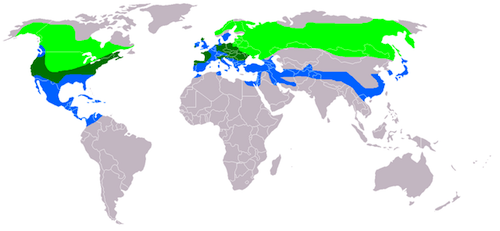
This raptor forages on the wing, capturing a wide range of prey, mainly small and medium-sized mammals and birds, while coursing low and buoyantly over the ground1. They have also been known to subdue larger prey by drowning them under water.
This is an adult female Northern Harrier which, as you can see, is brown above and buffy with brown streaks below.
The male and female are strongly sexually dimorphic but both have a distinctive white rump patch which is their most prominent field mark.
I took these photos of this female Marsh Hawk at Sacramento National Wildlife Refuge where there are many to be found.
If you live in an area where this raptor lives, you may wonder why you seem to see so many more females than you do the gray and white male with black wing tips shown in this John James Audubon drawing of the Marsh Hawk from Wikipedia Commons. This drawing shows a juvenile (with the rufous belly) at the top, the adult male in the middle and the adult female at the bottom.
The reason we seem to see so many more females than males is that both the male and female juveniles look like the adult female. The rufous breasted juveniles can be differentiated by the male having pale greenish-yellow eyes and the female dark chocolate eyes. The adults both have lemon yellow eyes.
If you are not familiar with this beautiful raptor, I found an excellent video showing many aspects of the Northern Harrier’s flight and prey habits. It also has great video of the male, not shown here, dropping off food for the female at the nest site.
To see more great bird photos, check out The Bird D’pot and Wild Bird Wednesday!
References: 1Birds of North America Online

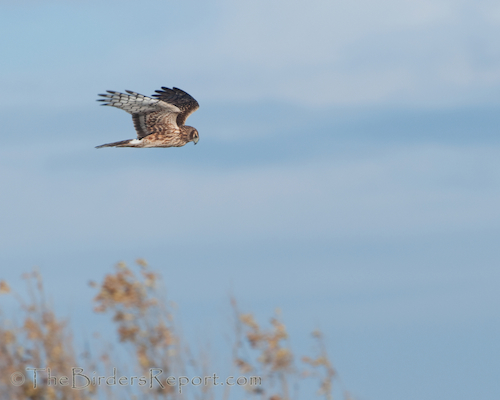
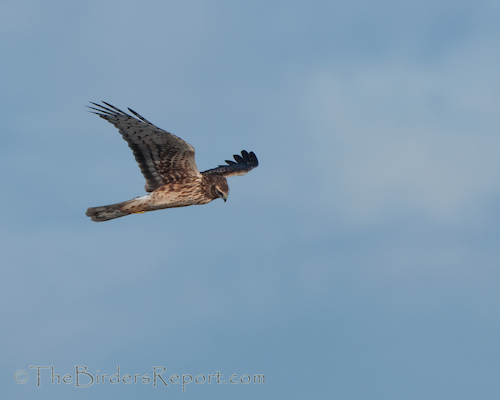
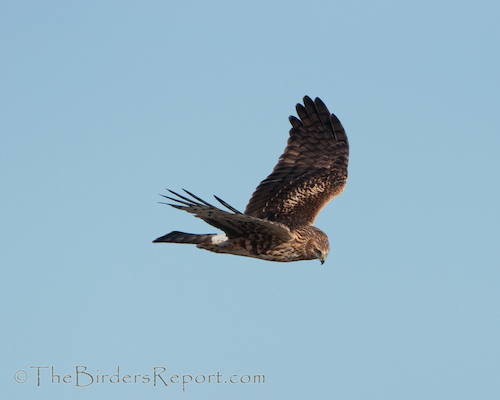
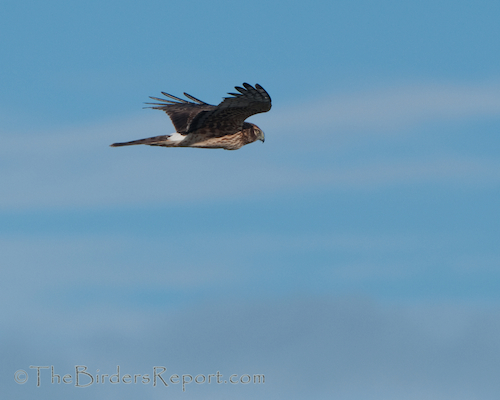
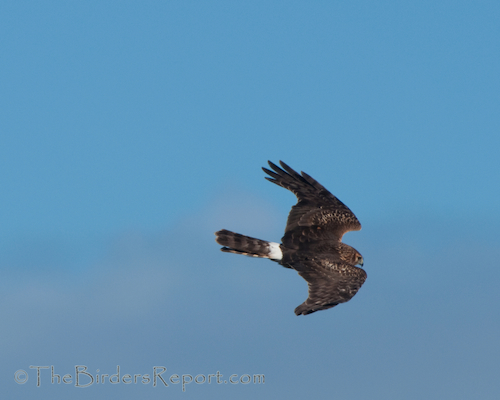
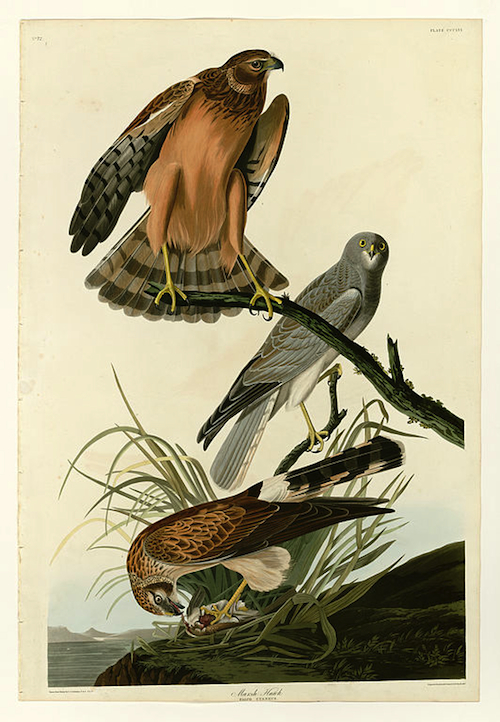
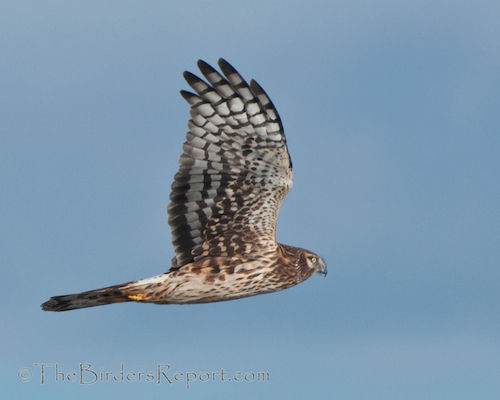








Comments on this entry are closed.
Wonderful post Larry and great information on Northern Harriers. I am able to get closer to them during the winter months than any other time of the year and I look forward to photographing them every chance I get!
Northern harriers are lots of fun to watch! I enjoyed all the information you shared with us.
They are so incredible!! Boom & Gary of the Vermilon River, Canada.
Great post for WBW! A lot of details in every singel photo!
very pretty birds!
Great birds and beautiful under-wing plumage patterns.
A very informative post about a beautiful raptor! I love to watch them work a field with that lilting flight just above the ground. Now, if I can just get one to stay in camera range more than a millisecond!
Larry, great post on the Harrier. Your photos are awesome. Happy Birding!
Wonderful captures of this beautiful bird!
Larry, you always give us such wonderfully informative posts. Even though I have the slimmest of chances of ever visiting N.America again, it is important to me to be better informed of the bird life there.
I also enjoyed the burrowing owl video. Than you.
Superb images and commentary!!! I especially liked the 3rd image from the top. Like it’s looking down for the catch of the day.
Thanks for linking up at the Bird D’Pot this week.
Wow, Larry!! What a great post – informative and such great flight shots.
Great pictures. I had notice a similarity between this bird and Hen Harriers – know I know why!!
Cheers and thanks for linking to WBW
Stewart M – Melbourne